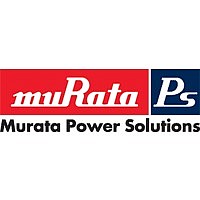GCM1885G1H150JA16D Murata Electronics North America, GCM1885G1H150JA16D Datasheet - Page 49

GCM1885G1H150JA16D
Manufacturer Part Number
GCM1885G1H150JA16D
Description
CAP CER 15PF 50V X8G SMD
Manufacturer
Murata Electronics North America
Series
GCMr
Datasheet
1.GCM0335C1ER30CD03D.pdf
(66 pages)
Specifications of GCM1885G1H150JA16D
Voltage - Rated
50V
Lead Style
*
Capacitance
15pF
Tolerance
±5%
Temperature Coefficient
X8G
Mounting Type
*
Operating Temperature
-55°C ~ 150°C
Applications
Automotive
Ratings
AEC-Q200
Package / Case
*
Size / Dimension
*
Thickness
*
Lead Spacing
*
Lead Free Status / RoHS Status
Lead free / RoHS Compliant
Features
-
!Note
• This PDF catalog is downloaded from the website of Murata Manufacturing co., ltd. Therefore, it’s specifications are subject to change or our products in it may be discontinued without advance notice. Please check with our
• This PDF catalog has only typical specifications because there is no space for detailed specifications. Therefore, please approve our product specifications or transact the approval sheet for product specifications before ordering.
sales representatives or product engineers before ordering.
!Note
No.
10
11
12 Vibration
13
14
15 ESD
16 Solderability
Medium Voltage for Automotive Soft Termination Type GCJ Series Specifications and Test Methods
Continued from the preceding page.
Resistance
to Solvents
Mechanical
Shock
Resistance to
Soldering Heat
Thermal Shock
• Please read rating and !CAUTION (for storage, operating, rating, soldering, mounting and handling) in this catalog to prevent smoking and/or burning, etc.
• This catalog has only typical specifications because there is no space for detailed specifications. Therefore, please approve our product specifications or transact the approval sheet for product specifications before ordering.
AEC-Q200
Test Item
Appearance No marking defects
Capacitance
Change
D.F.
I.R.
Appearance No marking defects
Capacitance
Change
D.F.
I.R.
Appearance No defects or abnormalities
Capacitance
Change
D.F.
I.R.
Appearance No marking defects
Capacitance
Change
D.F.
I.R.
Appearance No marking defects
Capacitance
Change
D.F.
I.R.
Appearance No marking defects
Capacitance
Change
D.F.
I.R.
Within the specified tolerance
0.025 max.
More than 10,000M or 100M · F
(Whichever is smaller)
Within the specified tolerance
0.025 max.
More than 10,000M or 500M · F
(Whichever is smaller)
Within the specified tolerance
0.025 max.
More than 10,000M or 500M · F
(Whichever is smaller)
The measured and observed characteristics should satisfy the
specifications in the following table.
Within 10%
0.025 max.
More than 10,000M or 100M · F
(Whichever is smaller)
The measured and observed characteristics should satisfy the
specifications in the following table.
Within 10%
0.025 max.
More than 10,000M or 100M · F
(Whichever is smaller)
Within the specified tolerance
0.025 max.
More than 10,000M or 100M · F
(Whichever is smaller)
95% of the terminations is to be soldered evenly and
continuously.
Specifications
Per MIL-STD-202 Method 215
Three shocks in each direction should be applied along 3
mutually perpendicular axes of the test specimen (18 shocks).
The specified test pulse should be Half-sine and should have a
duration: 0.5ms, peak value: 1500g and velocity change: 4.7m/s.
Solder the capacitor to the test jig (glass epoxy board) in the
same manner and under the same conditions as (19). The
capacitor should be subjected to a simple harmonic motion
having a total amplitude of 1.5mm, the frequency being varied
uniformly between the approximate limits of 10 and 2000Hz. The
frequency range, from 10 to 2000Hz and return to 10Hz, should
be traversed in approximately 20 minutes. This motion should be
applied for 12 items in each 3 mutually perpendicular directions
(total of 36 times).
Immerse the capacitor in a eutectic solder solution at 260 5 C for
10 1 seconds. Let sit at room temperature for 24 2 hours, then
measure.
Fix the capacitor to the supporting jig in the same manner and
under the same conditions as (19). Perform the 300 cycles
according to the two heat treatments listed in the following table
(Maximum transfer time is 20 seconds). Let sit for 24 2 hours at
room temperature, then measure.
Per AEC-Q200-002
(a) Preheat at 155 C for 4 hours. After preheating, immerse the
(b) Should be placed into steam aging for 8 hours 15 minutes.
(c) Should be placed into steam aging for 8 hours 15 minutes.
Specifications and Test Methods
•Pretreatment
•Pretreatment
Solvent 1: 1 part (by volume) of isopropyl alcohol
Solvent 2: Terpene defluxer
Solvent 3: 42 parts (by volume) of water
Perform the heat treatment at 150+0/-10 C for 60 5 minutes
and then let sit for 24 2 hours at room temperature.
Perform the heat treatment at 150+0/-10 C for 60 5 minutes
and then let sit for 24 2 hours at room temperature.
capacitor in a solution of ethanol (JIS-K-8101) and rosin (JIS-
K-5902) (25% rosin in weight proportion). Immerse in eutectic
solder solution for 5+0/-0.5 seconds at 235 5 C.
ethanol (JIS-K-8101) and rosin (JIS-K-5902) (25% rosin in
weight proportion). Immerse in eutectic solder solution for
5+0/-0.5 seconds at 235 5 C.
ethanol (JIS-K-8101) and rosin (JIS-K-5902) (25% rosin in
weight proportion). Immerse in eutectic solder solution for 120
After preheating, immerse the capacitor in a solution of
After preheating, immerse the capacitor in a solution of
5 seconds at 260 5 C.
Time (min.)
Temp. ( C)
Step
3 parts (by volume) of mineral spirits
1 part (by volume) of propylene glycol
monomethyl ether
1 part (by volume) of monoethanolomine
AEC-Q200 Test Method
-55+0/-3
15 3
1
Continued on the following page.
125+3/-0
15 3
2
C03E.pdf
47
10.5.20
3





















